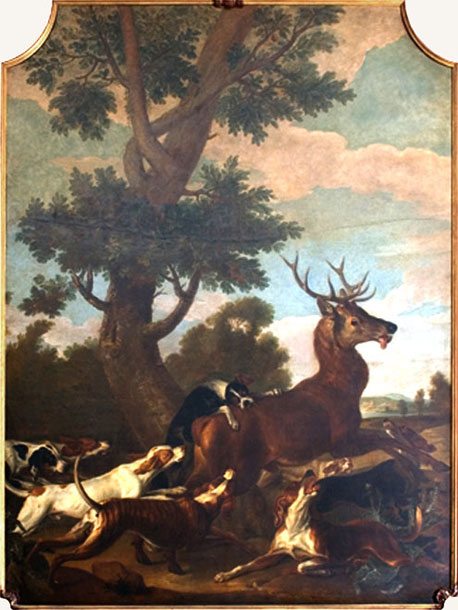
Format: 193 pp., hardcover; Size: 4.5 x 7.5; Price: $25; Jacket Illustration: Nicole Caputo; Publisher: Catapult; Number of Painters Mentioned in the Book: 43; Quotations by Famous People Who Are Not Painters, Some in Paraphrase: 28; Translator: Thomas Bunstead; Representative Passage: “Perhaps there is something spiritual in the experience of looking at a Rothko, but it’s the kind of spiritual that resists description: like seeing a glacier or crossing a desert. Rarely do the inadequacies of language become so patently obvious. Standing before a Rothko, you might reach for something meaningful to say, only to end up talking nonsense. All you want to say is ‘fuck me.’”
Central Question: What does the way we perceive and talk about art tell us about ourselves?
In the beginning of María Gainza’s novel Optic Nerve, the narrator—an Argentinian art historian also named María—encounters a painting by Alfred de Dreux. She remarks that the painting, an image of deer encircled by hunting dogs, was “fairly conventional, no point denying it, but it grabbed me nonetheless. More than that: it unsettled me.” I looked up the painting of Dreux’s Caza del Ciervo online and found it exactly as María describes it: “The deer is about to die. One of the dogs sinks its fangs into the back; another, a leg. The deer, on the verge of giving in, neck elaborately contorted, tongue out, is goggle-eyed with the same helplessness as the hare described in Lampedusa’s The Leopard […]”
María does not mention what is perhaps the painting’s most remarkable aspect: the deer seems to be staring directly at the viewer, in an almost human way. It is unsettling, and oftentimes it seems that María herself gazes back at the reader in a similar way, daring us to make sense of her digressive meditations.
Optic Nerve unfolds as a series of vignettes rather than a cohesive narrative. María wafts through these vignettes, reflecting on subjects ranging from her family’s aristocratic history to the lives of the artists whose work she encounters. The narrator moves digressively from one reflection to the next, making the novel feel like less of a story than a study—not only of art, but also of what our perception of art tells us about our impulse to make meaning, and the ways that endeavor is continually confounded. The sheer number of artistic and literary references that appear in the novel is impressive, ranging from Marguerite Duras to Buzz Aldrin. At times these references feel like matches lit in a dark corridor, meant...
You have reached your article limit
Sign up for a digital subscription and continue reading all new issues, plus our entire archives, for just $1.50/month.
Already a subscriber? Sign in




